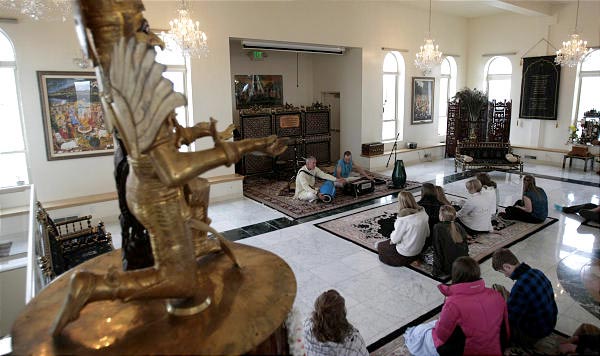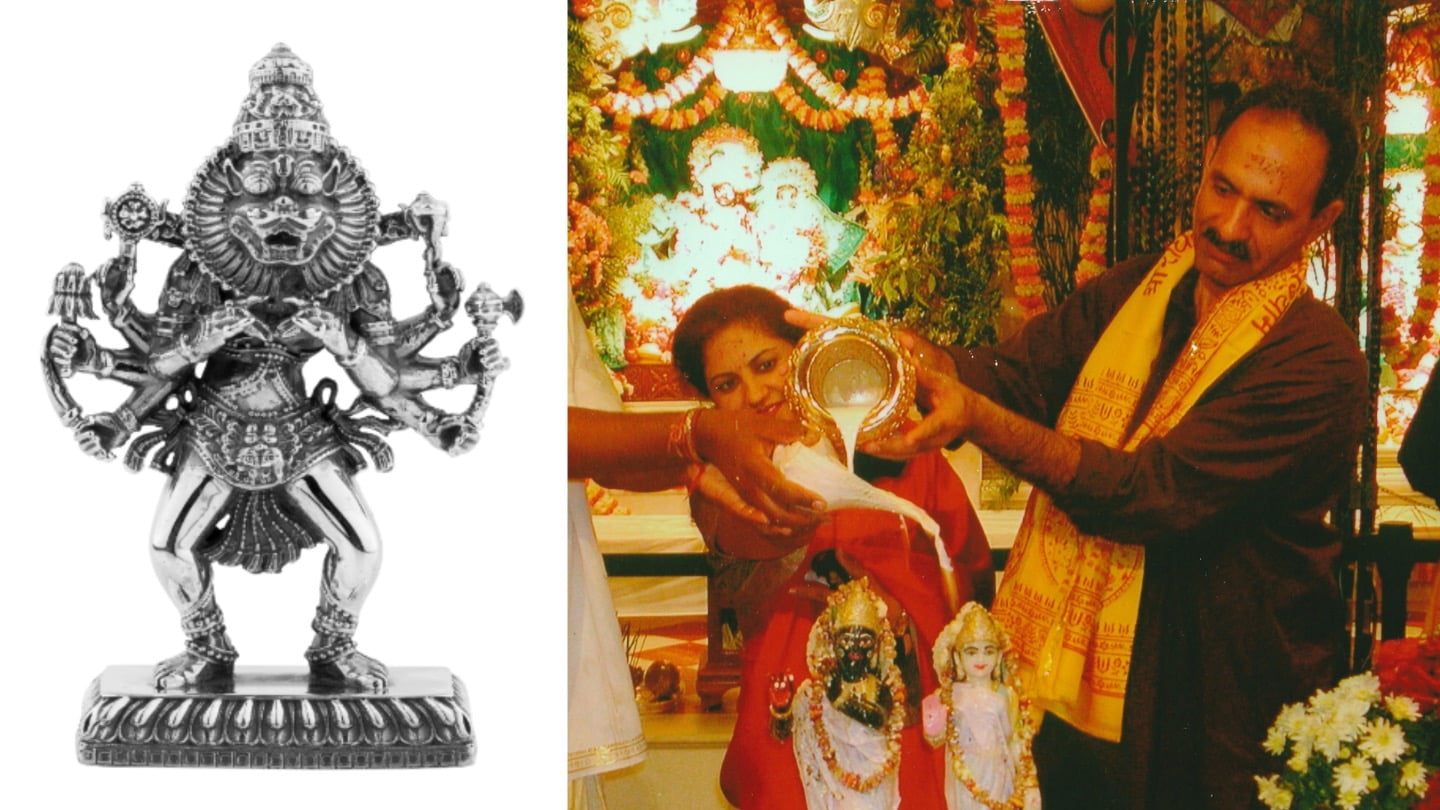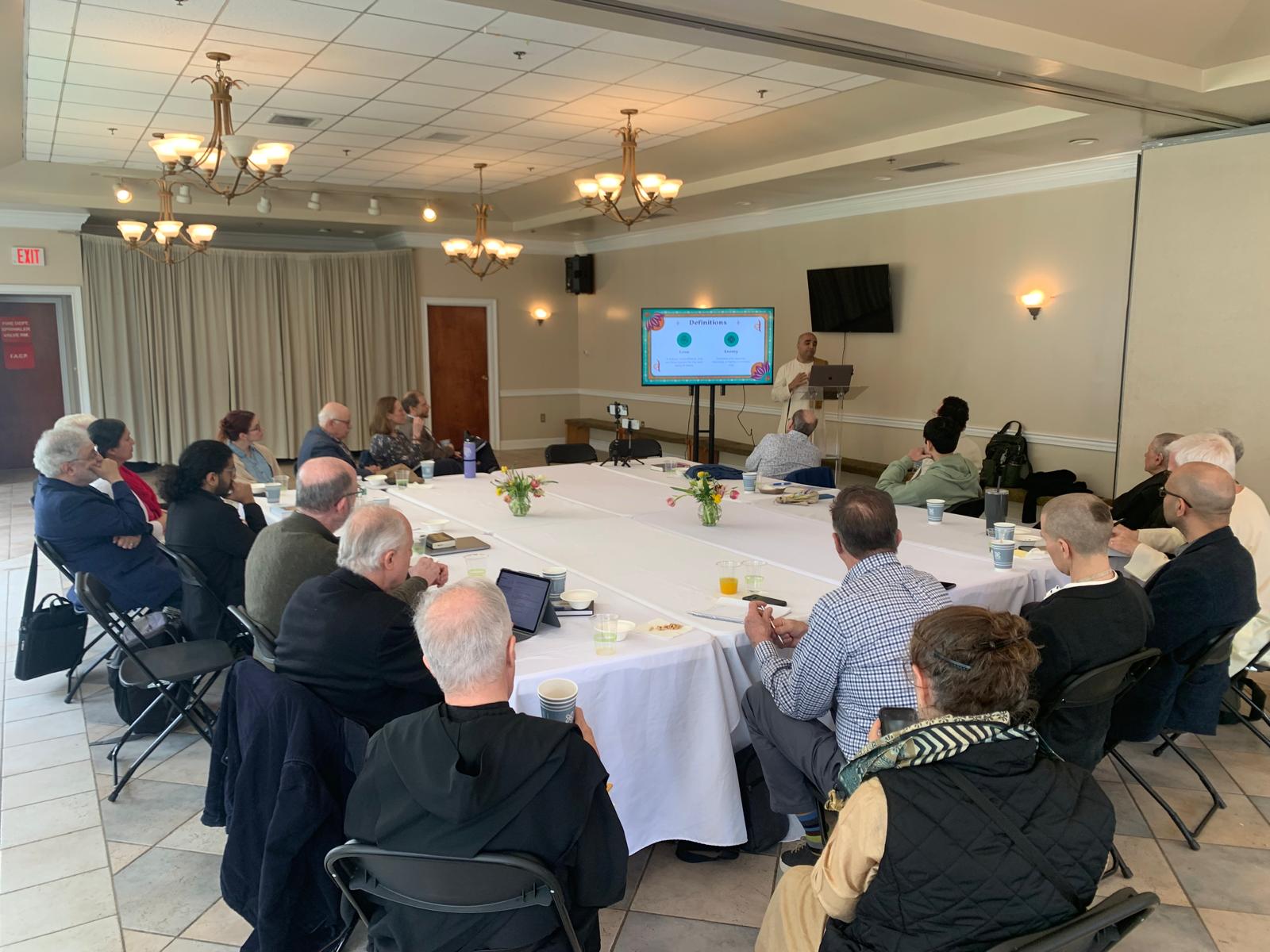Utah Students Get Lesson in Foreign Religion and Culture
By Carrie A. Moore | Apr 11, 2009

SPANISH FORK — Older Utahns may not consider the wide-open spaces of southern Utah County a cultural mecca, but school students who regularly make the trip here know better.
Rising atop a knoll along U.S. 89 amid a patchwork of gentlemanly farms and pastures, the stark white domes of the Sri Sri Radha Krishna Temple gleam in the sunlight — a mirage in the desert that may well disappear on second glance.
The contrast with the landscape is so stunning, the cultural intrigue so deep, that each year thousands of visitors flock to the temple grounds — a llama pasture equipped with a pavilion — for public festivals, private tours, meditation and yoga classes. Or to simply indulge in the vegetarian cuisine for sale inside.
On a chilly Wednesday morning, at least a hundred shoes of all sizes are scattered around the temple’s main door, a gesture to the sanctity of the place. Inside, Caru Das — who with his wife, Vai Devi, has literally built this temple in the desert — stands next to a small laptop computer at one end of the main floor, explaining Indian history, cultural practices and Krishna belief.
Despite the occasional squawk from the large resident parrot, dozens of students from Kaysville Junior High listen intently to the man whose Indian dress, smudged forehead, tightly shorn graying hair and small ponytail keeps their attention on the changing images on the video screen.
The group is one of dozens of public school student brigades that visit here each year, eager to experience a culture so foreign to their own that most have never considered a deity to be anything but an invisible, all-knowing being who rules the universe.
Yet, as they observe the multiple statues and images of Krishna, Brahman (creator), Vishnu (preserver) and Shiva (destroyer), and learn about the Indian cultural practices — such as showering the deities with hefty portions of fruits, vegetables and grains — the intrigue deepens.
After the cultural presentation, the students move upstairs for a lesson in Hindu belief about reincarnation — how death of the body means the soul moves into the body of a different entity, be it human or sub-human. One’s karma, or the way one uses time and energy as a human, determines the soul’s next destination upon death, Caru explains.
And because the soul (a person’s essence) doesn’t change, Krishna believers tend to view themselves as embodied spirits, rather than looking upon the body as the depiction of who they are, he says.
“If you drive a Volkswagen, you don’t introduce yourself as Mr. Volkswagen. The driver of the self is the eternal soul, and the soul transmigrates from one body to another,” he explains. “The power that governs what your next body will be is called karma.”
The students look at each other, some perplexed with the idea and others nodding in a understanding, if not belief.
Chanting mantras with musical instruments is next on the agenda, followed by a basic yoga lesson.
While teachers who bring their young charges here have cleared the field trip with school administrators based on its cultural and educational, many others may avoid the experiences out of fear over student or parent reaction to what may be seen as a clash of church and state.
It’s a notion that Martha Ball, director of Utah’s Three R’s Project (Rights, Responsibilities and Respect) says has no place in the classroom. She trains teachers statewide on ways to approach the subject of religion in school. And her guiding principle is “You can’t ignore it.”
Why?
Ball maintains you can’t understand the history of America, or the history of the world for that matter, without understanding the religious beliefs and practices of those who have shaped it.
Yet there is hope the misunderstanding and fear regarding religion in the classroom are fading when Caru discusses the nearly 1,200 formal tours of 2-3 hours each that he conducted through the temple last year. While many of them were college students or other adults, more high school, middle school and even elementary school age students are discovering what’s inside the multiple domes.
Ball has helped educate many about the virtues of freedom in learning about religion in such settings, he said.
“Not only can teachers do this, but they should do these kinds of things,” he said. “They have a right to bring students here. The kids get so much from this. I would hate for misinformation to keep people away. We don’t want to convert anyone and we haven’t converted anyone.”
What he has done, he believes, is offer a detailed glimpse into a culture and faith that many would never experience without a trip to Spanish Fork.
Amie Huggins, whose honors geography class was the group whose shoes were scattered outside the temple, said she’s been bringing students to the temple for the past three years. It’s among the most popular learning activities they experience all year, she said.
Some have been hesitant when she explains the venue, she said. “I tell them that ‘just as your religion is important to you, theirs is important to them. You don’t have to believe in it or agree with it, but you need to understand and respect it.”
To date, there have been no complaints. Some parents have even thanked her for expanding their child’s horizons, she said.
Marin Starkey, Kenna Isom and Olivia Snarr were enthusiastic after their experience. “I enjoyed the yoga,” Starkey said, “and especially learning about the different things you do. I think it’s a good way of relaxing.”
“I like their focus and respect for other forms of life,” Isom said. “They treat the animals the same way they treat each other and they love everything.”
“I really like how the temple looks from the outside. The domes and the deities — I think it’s really interesting,” Snarr said. The threesome said they hoped to return with family members for one of the temple’s many public festivals.
The tour is $1 per student for school groups, or $4 per student if the group elects to eat at the temple’s vegetarian buffet afterward.
For information, visit the Web site at www.utahkrishnas.com.














